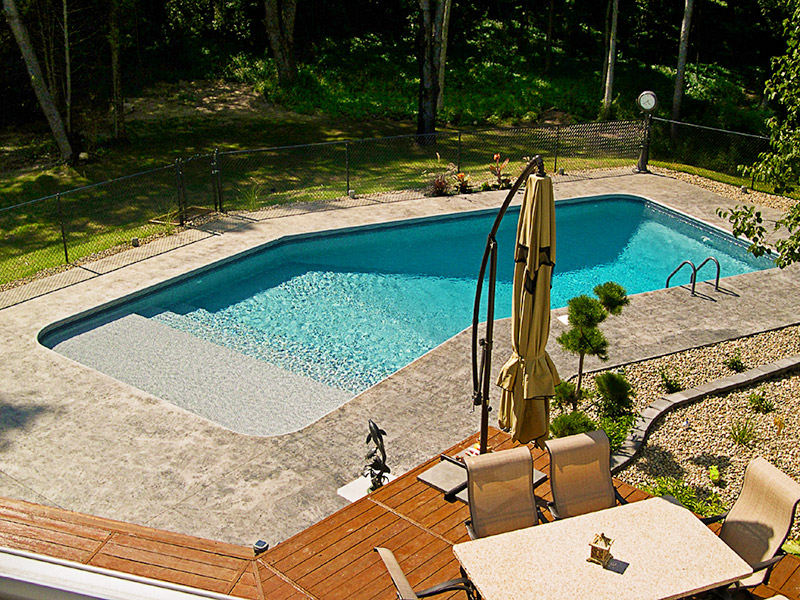F.A.Q
Do you have questions about your pool? We are here to help! Below you will find answers to some of the most popular questions asked by pool owners! If you have a question that is not listed below. Feel free to reach out to us by clicking here.
Weekly testing works for most backyard pools, but the best bet is to test your pH and chlorine levels at least twice per week. Chlorine should be fed continuously through a chemical feeding device to maintain a consistent level.
Start by being very careful with hand vacuums. Scraping them against the edge of the pool will cause little holes around the outer edge. Limit the use of automatic cleaners, running them only when the pool needs cleaning and not letting them sit in one spot for to long of a time. Most cleaners will have one or two spots where they tend to get stuck or hung up. These are usually the places where holes first develop.
Be careful with the chemicals you use. Make sure they are for vinyl liners and be sure whatever you put directly into the pool dissolves before it hits the bottom.
Eventually the part of the liner that is above water level and exposed to the most afternoon sun will start to dry rot. This starts with just a little discoloring and many years later may start to tear or rip. You can either try to shade that area or assume that when that happens it’s just time to replace the liner.
No. Pools can handle cold temperatures better when partially filled with water as a buffer. A drained pool can also crack or pop out of the ground because of pressure from ground water.
Chlorine in swimming pools kills the germs that may make people sick, but it takes time. Chlorine in properly disinfected pools kills most germs that cause RWIs within minutes. However, it takes longer to kill some germs such as Cryptosporidium that can survive for days in even a properly disinfected pool.
Also, many things can reduce chlorine levels in pool water. Some examples are sunlight, dirt, debris, and material from swimmer’s bodies. Healthy swimming behaviors and good hygiene are needed to protect you and your family from RWIs and will help stop germs from getting in the pool.
Be sure to completely remove pool covers before entering the swimming pool to go swimming. A partially covered swimming pool is a hazard for children, who can become trapped underneath the cover. If you are swimming, remove the cover completely from the area inside the swimming pool fence. When replacing it on the top of the swimming pool, be sure to completely and securely fasten the cover back onto the top of the pool to avoid any additional drowning hazards.
Weekly service is essential to maintain a great looking, healthy, sparkling pool. Consistency is vital to your pool’s overall health.


VISIT US TODAY
Need to come in an pick something up? We have two convenient locations you can visit! Click the button below for directions.